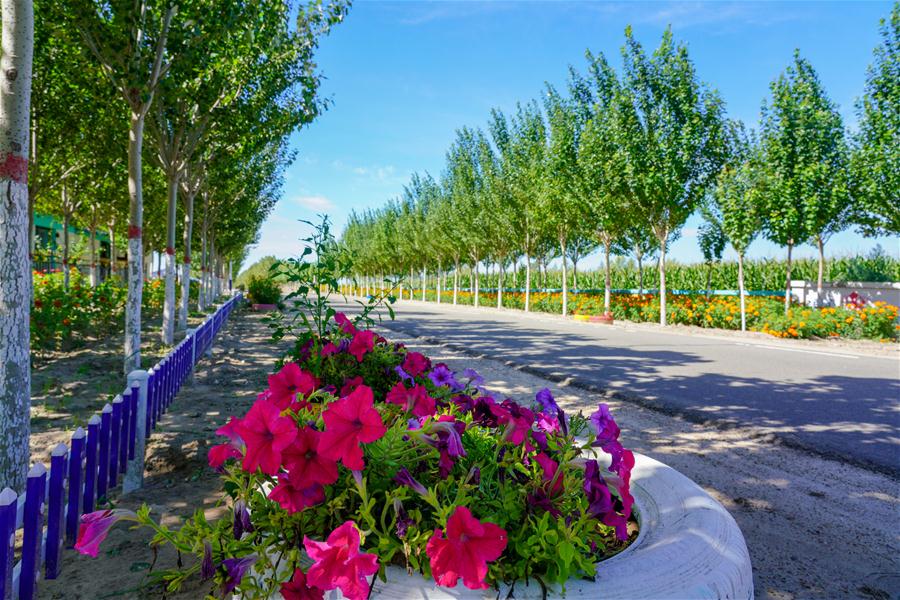Better infrastructure facilities in China’s rural areas help improve people’s livelihoods
Since 2012, China has been stepping up efforts to improve infrastructure construction in rural areas, resulting in better livelihoods for rural residents.

Photo taken on Aug. 12, 2020 shows a hardened road under an infrastructure reform in Chatai Village, Heiyupao Township, Zhenlai County, northeast China's Jilin Province. Once a national-level poverty-stricken county, Zhenlai County has shaken off poverty in 2019 after years of anti-poverty efforts. Now the county plans to upgrade its rural infrastructure and industrial structure with various supportive funds. (Xinhua/Zhang Nan)
The country has equipped rural areas with broadband internet services, built base stations and optical fiber networks there, and offered villagers training courses on using smartphone applications.
In the past, television reception in rural areas was always affected by factors such as severe weather conditions, but this is no longer a problem today. The construction of information infrastructure also helps improve agricultural production and drive the modernization of rural areas.
Furthermore, the country has improved transportation facilities in rural areas, particularly in poverty-stricken areas. Roughly 2.53 million kilometers of rural roads have been built or improved, making 1,040 towns, townships and 105,000 administrative villages accessible by paved roads. Bus services have also been made available in towns, townships and administrative villages where conditions are feasible.
Thanks to better transportation facilities, villagers can easily sell their farm produce to customers outside their village, resulting in their incomes increasing, while they had to either carry the products on their backs or use donkeys or horses to transport products in the past. Moreover, many of them now run fruit picking farms and agritainment businesses. Many talented young people, who used to love working outside, have returned to their hometowns in the rural areas to start businesses.
In addition, the country has worked to prevent and control water-related disasters, conserve water, restore the ecological environment, carry out a series of water conservancy projects to divert water across different regions and drainage basins, and improve irrigation facilities.
In northwest China's Ningxia Hui Autonomous Region, for example, irrigation has become increasingly accurate and efficient, thanks to new facilities such as automatic irrigation systems. The time needed for irrigation has been reduced by three to five days on average, which helps save on labor costs for the villagers, thus increasing their incomes.
Photos
Related Stories
- Female entrepreneur from south China’s Guangxi brings fortune to local villagers in previously impoverished community
- Digital technologies help improve rural living environment
- Intelligent equipment, systems upgrade village clinics across China
- Rural areas reap benefits of vitalization
- Ceramic art helps rural vitalization in central China’s Henan province
- “Rural resources banks” in E China’s Anhui turn ecological resources into valuable assets
- New media helps promote rural revitalization projects in Guizhou
- China's rural vitalization breathes new life into agriculture, villages
- Residents of Hezhe ethnic group living in NE China’s Heilongjiang embrace better life through rural vitalization drive
- New generation farmers active in China’s construction of digital villages
Copyright © 2022 People's Daily Online. All Rights Reserved.









